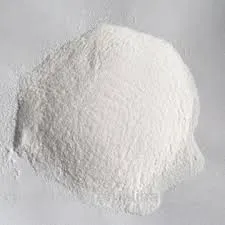
Nov . 27, 2024 00:11 Back to list
Exploring the Applications and Benefits of Hydroxypropyl Methylcellulose in Various Industries
Hydroxypropyl Methylcellulose A Versatile Ingredient in Various Industries
Hydroxypropyl Methylcellulose (HPMC) is a semi-synthetic polymer derived from cellulose, a natural polymer found in plant cell walls. This unique compound has garnered significant attention due to its versatile applications across a range of industries, including pharmaceuticals, food, cosmetics, and construction. Understanding the properties and uses of HPMC reveals why it has become a crucial ingredient in many products we use daily.
Chemical Composition and Properties
HPMC is synthesized by the etherification of cellulose with propylene oxide and methyl chloride. The resulting compound is a white to off-white powder that is hygroscopic, meaning it can absorb moisture from the air. HPMC is soluble in cold water, forming a clear and viscous solution, while remaining insoluble in organic solvents. Its unique solubility properties make it ideal for various applications, especially where a thickening or binding agent is necessary.
One of the notable characteristics of HPMC is its ability to form gels at elevated temperatures, which makes it particularly useful in food products. Furthermore, it possesses excellent film-forming abilities and can create a barrier against moisture, thus enhancing the shelf-life of products.
Pharmaceutical Applications
In the pharmaceutical industry, HPMC is widely used as an excipient or inactive ingredient in drug formulations. Its properties as a binder and thickening agent make it essential in tablet manufacturing. HPMC is also used in controlled-release drug formulations, where it helps to regulate the release rate of the active ingredients. This controlled release enables medications to remain effective over a more extended period, improving patient adherence to their medication regimens.
Additionally, HPMC is utilized in eye drops and other ophthalmic solutions due to its ability to increase viscosity and provide a lubricating effect. This enhances comfort for users while ensuring that the active ingredients remain in contact with the eye surface for longer durations.
Food Industry Uses
hydroxypropyl methylcellulose use

In the food industry, HPMC serves multiple roles, acting as a thickening agent, stabilizer, and emulsifier. It is commonly found in products such as salad dressings, sauces, and ice creams. By enhancing texture and mouthfeel, HPMC contributes to the overall eating experience while also extending product shelf life. Given its ability to bind moisture, HPMC can help prevent the separation of ingredients, ensuring a consistent product.
Furthermore, as consumer demand for gluten-free products rises, HPMC has gained popularity among food manufacturers. It can mimic the properties of gluten, providing the necessary texture and elasticity in gluten-free bread and baked goods.
Cosmetics and Personal Care
HPMC's film-forming and water-retaining properties make it a valuable ingredient in cosmetic formulations. It is often found in lotions, creams, shampoos, and conditioners, where it enhances the texture and spreading qualities of products. Additionally, its ability to stabilize emulsions helps to ensure that oils and water-based components do not separate, maintaining the product's quality.
The use of HPMC in the cosmetic industry is not limited to personal care products; it also plays a role in makeup formulations. In products like foundations and mascaras, HPMC can extend wear time and improve the overall application, providing a smoother finish.
Construction Industry
In construction, HPMC is utilized in cement and mortar applications. Its water-retaining properties help improve workability and extend the open time of cement mixtures, allowing for easier application and reduced waste. HPMC also enhances the adhesion of mortars to various surfaces, making it an essential component in tile adhesives and other building materials.
Conclusion
In summary, Hydroxypropyl Methylcellulose is an incredibly versatile compound with a wide array of applications across multiple industries. From pharmaceuticals to food, cosmetics, and construction, its unique properties make it an invaluable ingredient in enhancing the quality and performance of products. As research continues into its potential applications, HPMC's importance is likely to grow, satisfying both consumer demands and industry standards.
-
HPMC for Tile Adhesive: Superior Bonding & Workability
NewsAug.30,2025
-
Premium Cellulose Ether: Effective Liquid Thickener Solutions
NewsAug.29,2025
-
HPMC for Tile Adhesive: Enhanced Bonding & Workability
NewsAug.28,2025
-
tile-bonding-additives-for-stronger-bonds
NewsAug.22,2025
-
construction-grade-rdp-for-wholesale-needs
NewsAug.22,2025
-
trusted-hec-supplier
NewsAug.22,2025







